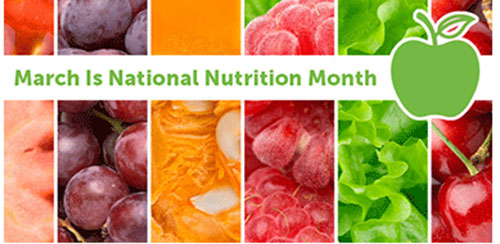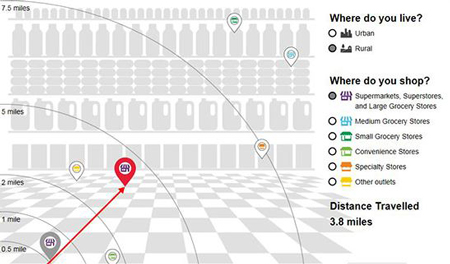National Nutrition Month is an opportunity to promote awareness of the essential roles played by a nutritious diet and physical activity in the health and well-being of all Americans. For more than three decades, Mathematica Policy Research has analyzed nutrition policies and programs designed to reduce hunger and to promote a healthy, active lifestyle in low-income populations. We have also examined the dietary habits and physical activity of Americans to better understand where nutrition choices can be improved.
In recognition of National Nutrition Month, we have summarized our latest research on nutrition policy and programs.
Assessing health outcomes for children in Harlem
The Healthy Harlem initiative is a model for promoting healthy lifestyles in the charter school, early childhood, and after-school programs run by the Harlem Children’s Zone. Mathematica assessed the program’s impacts on students’ knowledge, attitudes, and behaviors related to nutrition and physical activity as well as the impacts on weight and fitness among all children, including those who are already overweight or obese. Preliminary findings will be released in a report later in 2017.
Conducting a multicity soda tax evaluation
More cities are taxing sugar-sweetened beverages (SSBs) across the country, offering a unique opportunity to evaluate the implementation and impact of those taxes. With funding from the Robert Wood Johnson Foundation, Mathematica is conducting a three-year implementation and impact evaluation of SSB taxes in Oakland, Philadelphia, and Cook County, Illinois, focusing on the impacts on children, youth, and families who are at high risk for childhood obesity.
Visualizing Food Access: How Far Do SNAP Participants Travel for Groceries?
Research reveals that participating in the Supplemental Nutrition Assistance Program (SNAP) is associated with improved food security. But the magnitude of that improvement partly depends on where a SNAP participant lives and the types of food stores the participant can access with SNAP benefits. Our latest data visualization will help you learn more about the types of food stores that SNAP participants, on average, are able to access in their geographic area.
No summer vacation for nutrition benefits
The 2010 Agriculture Appropriations Act authorized and provided funding for the U.S. Department of Agriculture to implement and rigorously evaluate demonstrations designed to reduce food insecurity among children in the summer. One such effort was the Summer Electronic Benefit Transfers for Children (SEBTC) demonstration. In the summer of 2012, SEBTC staff randomly assigned households with children who were eligible for free or reduced-price meals to receive a monthly benefit of $60 per school-age child. Benefits were distributed through EBT cards issued by the Supplemental Nutrition Assistance Program and the Special Supplemental Nutrition Program for Women, Infants, and Children. The same types of households were randomly assigned to a control group, which did not receive benefits in the summer.
The findings showed that the $60 benefit substantially reduced food insecurity in children and encouraged the consumption of nutritious foods including fruits, vegetables, and whole grains. These findings are summarized in a recently published paper written by Mathematica’s Anne Gordon and her colleagues.
Direct Certification Through Medicaid: Expanding Access to Free Lunch and Breakfast
In direct certification with Medicaid (DC-M), states and districts may use Medicaid files to directly certify students for free meals. In an evaluation of DC-M in selected states and school districts, Mathematica found that the program reduced the use of applications for school meals while increasing the proportion of students receiving free meals; the program did not affect the number of students served overall. As a result of the increase, some states saw an increase in the amount for which they are reimbursed by the federal government. However, there was no impact on district costs for certifying students. State DC-M administrative costs varied widely, but the per-student costs were low even in states with the highest administrative costs, and a large majority of the costs were start-up costs rather than ongoing costs.
Direct Certification in the NSLP: School Year 2015–2016
Mathematica’s upcoming report on direct certification assesses the effectiveness of state and local efforts to directly certify children for free school lunches under the NSLP during the 2015–2016 school year. The most recent report on direct certification, covering the 2014–2015 school year, showed that the number of students with access to free school lunches continued to grow as the use of direct certification grew. In the 2014–2015 school year, states and local education agencies directly certified 91 percent of school-age children from households that participate in SNAP, up from 87 percent for the previous year.


